Social office design in Nice by architects Dimitri Roussel and Nicolas Laisné
Plant-filled staircases form the perfect alibi for fresh air and creative conversations during the working day at Anis, an office building designed by architects Dimitri Roussel and Nicolas Laisné in Nice Meridia

Along the French Riviera, Nice is dreaming big. Spanning 7,000 acres, Eco Valley – a former agricultural area stretching between the airport and the Allianz Riviera football stadium – is striving to become an alternative model of sustainable development and urban planning.
At the heart of this ambitious endeavour is Nice Meridia – an urban technopolis that embodies the 21st century Mediterranean neighbourhood; ample vegetation, public spaces aplenty and understated architecture punctuated by a handful of spectacular buildings. Exhibit A is Anis, an expressive new office building wrapped with outdoor stairwells designed by architects Dimitri Roussel and Nicolas Laisné.
‘While vertical stacking architecture separates spaces and people by level, outdoor stairways mixed with vast common spaces recreate links between workers. I like the idea of a building that offers spaces where people can meet,’ says Roussel. ‘Staircases are the perfect alibi to do this in the context of office programme, where every square metre has to be used (and sold) as a working space.’
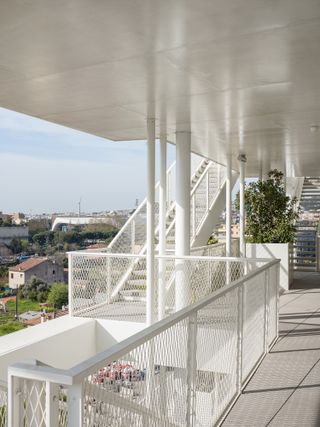
Shifting circulation to the outside allowed the architects to provide a flexible interior and shaded exterior without the use of costly sun control systems. As Roussel points out, ‘unveiling stairs drives people to use them and creates a daily physical activity’ too.
Anis was designed around three main objectives; to create attractive workspaces, to generate places for employees to meet and to cater for flexible working – all while providing a sustainable building in a Mediterranean context. As Laisné explains: ‘In the north of Europe, we isolate the walls and try to protect buildings from outside. Here, we have created tempered outside spaces and have opened working rooms on them.’
‘The building has an aesthetic motivated by new ways of living and working. Functionalism can be fun!’ – Nicolas Laisné
To create this new ecosystem, the architects chose to plant dozens of trees on the terraces, dotting the white facades with greenery and shade. ‘I like to play with a strong modern functional concept and adapt it to a contemporary, contextual and environmental situation – as we did here with the local Mediterranean climate specificities,’ says Roussel.
Developed by Pitch Promotion, Anis is part of a competition-winning masterplan for Meridia, which saw French architects Lambert Lenack coordinate a roster of international architects including Sou Fujimoto, Cino Zucchi and Chartier Dalix. Laisné and Roussel (who have since set up their own respective practices as Nicolas Laisné Architectes and Dream) delivered Anis within the original budget of €11.5M.
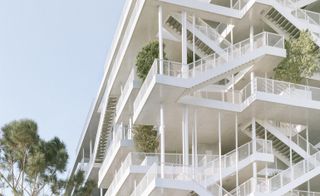
The building is situated along the main avenue of Meridia and in dialogue with several adjacent projects, including Jean Nouvel’s Pléiade and Odyssée Residences on the West, Robini Park to the north and a future public space with an upcoming tram stop on the south. Completed in November 2018, Anis was officially inaugurated on 21 February this year.
As Laisné concludes: ‘this building is a perfect example of my strategy in architecture and design: creating a strong concept with very expressive facades. The built result has a spectacular aesthetic motivated by new ways of living and working. Functionalism can be fun!’
Wallpaper* Newsletter
Receive our daily digest of inspiration, escapism and design stories from around the world direct to your inbox

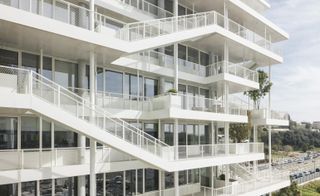
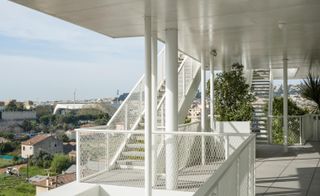
INFORMATION
For more information, visit the Laisné Architectes website and
the Dream website
-
 Elias Sime reflects on the destructive nature of technology in Venice
Elias Sime reflects on the destructive nature of technology in VeniceIn his solo show ‘Elias Sime: Dichotomy ፊት አና ጀርባ’ at the Venice Biennale 2024, the artist spotlights technology's destructive nature for humans and the environment
By Gameli Hamelo Published
-
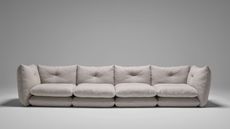 Knoll presents Willo Perron sofa at Salone del Mobile 2024, 'a piece that can stay with you forever'
Knoll presents Willo Perron sofa at Salone del Mobile 2024, 'a piece that can stay with you forever'Salone del Mobile 2024: the ‘Pillo’ sofa by Willo Perron for Knoll is the California-based designer’s first piece for the American brand, prioritising comfort and timeless usability
By Rosa Bertoli Published
-
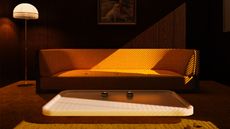 Nuova wants to 'bring time travel to the world' with their debut at Milan Design Week
Nuova wants to 'bring time travel to the world' with their debut at Milan Design WeekCalifornian design studio Nuova has been working behind closed doors for some of the biggest names in luxury and tech. The studio makes its public debut at Milan Design Week 2024, and take visitors on a journey back to 1971
By Laura May Todd Published
-
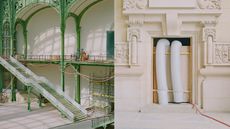 Grand Palais restoration in Paris through the lens of champion fencer Enzo Lefort
Grand Palais restoration in Paris through the lens of champion fencer Enzo LefortAs Paris’ Grand Palais prepares to reopen following extensive restoration by Chatillon Architectes, we visit the site with champion fencer and photographer Enzo Lefort, who documented the space ahead of the Olympic Games 2024
By Ellie Stathaki Published
-
 Modernist architecture: inspiration from across the globe
Modernist architecture: inspiration from across the globeModernist architecture has had a tremendous influence on today’s built environment, making these midcentury marvels some of the most closely studied 20th-century buildings; check back soon for new additions to our list
By Ellie Stathaki Published
-
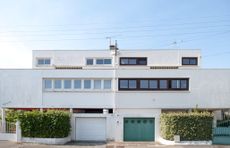 Royan Architecture Month showcases French modernism by the sea
Royan Architecture Month showcases French modernism by the seaRoyan Architecture Month 2024 launches in the French city, where many travel to see midcentury builds by the sea, from Notre Dame church to Palais des Congrès
By Stacy Suaya Published
-
 Dip into the Paris pools and swimming culture enriching the 2024 Olympic Games
Dip into the Paris pools and swimming culture enriching the 2024 Olympic GamesParis pools, in the Olympics and beyond, have inspired fun, wellness and a love of sports in the French capital
By Ellen Himelfarb Published
-
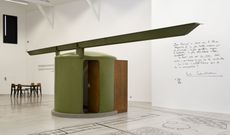 Jean Prouvé’s House of Better Days on show at Galerie Patrick Seguin in Paris
Jean Prouvé’s House of Better Days on show at Galerie Patrick Seguin in ParisThe Maison Les Jours Meilleurs, or House of Better Days, by Jean Prouvé is explored in a new show at Galerie Patrick Seguin in Paris
By Harriet Thorpe Published
-
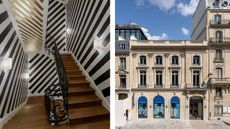 Hauser & Wirth Paris by Laplace is a winning restoration in the Wallpaper* Design Awards 2024
Hauser & Wirth Paris by Laplace is a winning restoration in the Wallpaper* Design Awards 2024Hauser & Wirth Paris by Laplace sees the architectural agency named Best Restoration Kings, breathing new life into an 1877 hôtel particulier near the Champs-Elysées
By Amy Serafin Published
-
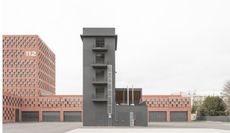 A fire station cuts a bold figure in the city of Rennes
A fire station cuts a bold figure in the city of RennesThis fire station by LAN becomes a new landmark for Rennes, France
By Ellie Stathaki Published
-
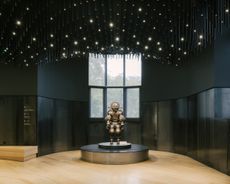 A refreshed Musée National de la Marine shows off its expanded exhibition spaces in France
A refreshed Musée National de la Marine shows off its expanded exhibition spaces in FranceMusée National de la Marine in France has been brought to the 21st century by a team comprising h2o Architectes, Snøhetta and exhibition designers Casson Mann
By Clare Dowdy Published